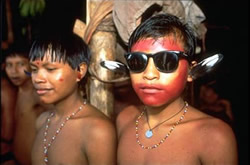Faculty of Arts
Arts Menu
-
- Communication and Visual Arts
- Environment, Culture and Society
- Literatures, Languages, and Performing Arts
- Philosophy, History and Politics
- Chair's Message
- History
- Degree Options
- Courses
- Student Success
- Awards and Scholarships
- Handbook for History Students
- Introduction - Handbook
- Why Study History?
- Varieties of History
- Historian's Work
- Pros, Amateurs and others
- Careers
- Libraries and Research
- Taking Notes
- Formulating a Topic
- Compiling a Bibliography
- Primary Sources
- Secondary Sources
- Need for Recent Sources
- Where to Start
- Note-taking
- Shape of the Essay
- Style of the Essay
- Checking the Essay
- Documentation
- Bibliographies and Footnotes
- Plagiarism
- Writing Essay Examinations
- Title Pages and Formatting
- Citation Generators
- Examples
- Citation Formatting
- History Links
- Philosophy
- Politics
- Our Faculty
- Contact Us
- Psychology
> TRU Home > Faculty of Arts > Faculty of Arts Departments > Environment, Culture and Society > Anthropology > What is Anthropology?
Section Menu
-
- Communication and Visual Arts
- Environment, Culture and Society
- Literatures, Languages, and Performing Arts
- Philosophy, History and Politics
- Chair's Message
- History
- Degree Options
- Courses
- Student Success
- Awards and Scholarships
- Handbook for History Students
- Introduction - Handbook
- Why Study History?
- Varieties of History
- Historian's Work
- Pros, Amateurs and others
- Careers
- Libraries and Research
- Taking Notes
- Formulating a Topic
- Compiling a Bibliography
- Primary Sources
- Secondary Sources
- Need for Recent Sources
- Where to Start
- Note-taking
- Shape of the Essay
- Style of the Essay
- Checking the Essay
- Documentation
- Bibliographies and Footnotes
- Plagiarism
- Writing Essay Examinations
- Title Pages and Formatting
- Citation Generators
- Examples
- Citation Formatting
- History Links
- Philosophy
- Politics
- Our Faculty
- Contact Us
- Psychology
What is Anthropology?
Anthropology, as it is taught at most North American universities, consists of four sub-disciplines:
- Socio-cultural anthropology is the study of contemporary societies, with an emphasis on indigenous peoples and small communities on the margins of industrial society
- Archaeology provides insights into the lives of prehistoric people by reconstructing extinct cultures with the help of excavated artifacts and structures
- Physical (biological) anthropology is concerned with the emergence of the human species and its evolution
- Anthropological linguistics is the study of indigenous languages and other, non-verbal, forms of communication
At TRU we offer introductory courses in archaeology (ANTH 1190), physical (ANTH 1110), and socio-cultural anthropology (ANTH 1210). Advanced courses are limited to archaeology and socio-cultural anthropology.
Students may obtain a general BA with an area of concentration in anthropology. We also offer a certificate in Aboriginal studies.

Anthropology is the most humanistic of the sciences and the most scientific of the humanities. Alfred L. Kroeber

